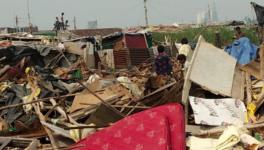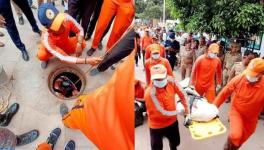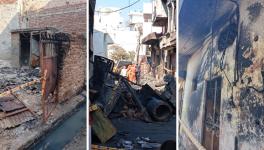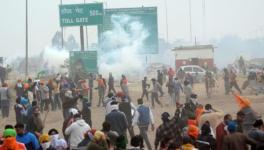The Dark Underbelly of Sanitation Workers, and the Baggage of Caste
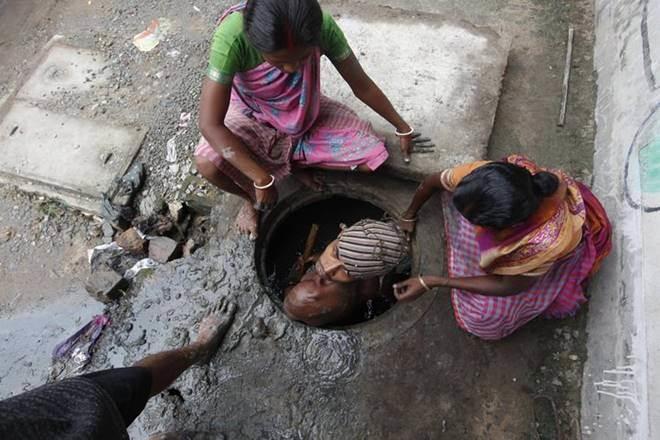
Image Courtesy: The Financial Express
There was a putrid stench in Lutyens’ Delhi as contractual sanitation workers of the New Delhi Municipal Council (NDMC) staged a protest by dumping garbage outside prominent buildings, such as Shastri Bhavan and Rail Bhavan, on 24 May.
The NDMC workers, who had ensured that their civic body is ranked as the cleanest small city in the government survey ‘Swachh Survekshan 2018’, are grappling with appalling conditions. The sanitation workers, who are employed on a contractual basis, were demanding regularisation of jobs and better wages. The protest was called off on the evening of 24 May, after NDMC chairman Naresh Kumar promised action.
“We had staged the protest as we are demanding increase in salary. We are also demanding that around 6,000 temporary workers should be given permanent jobs. Around 250 contract workers should also be regularised,” said Ravinder Nath Bharti, president of the sanitation workers’ union, as quoted by The Indian Express.
However, the dark underbelly of the sanitation workers’ life stretches beyond the measly wages. In the past seven years, an alarming number of 31 sanitation workers, including manual scavengers, have died in the Capital while cleaning sewer lines and manholes. Mostly, the deaths were caused due the inhalation of toxic fumes like hydrogen sulfide, ammonia, methane by workers who entered the sewer.
“There are many workers who have been working since the past 20 years on contracts and are yet not regularised. They don’t receive their wages on time, because of which they are unable to function properly. Moreover, the wages are even lower because they work as daily wagers and not as permanent employees,” said Sanjay Gehlot, State President of MCD Swachhta Karamchari Union, speaking to Newsclick.
A statement released by the Lieutenant-Governor (L-G) office in August 2017, after a slew of deaths of ten sanitation workers, said:
“The employers must provide gas masks, safety harness belts, helmets, and mechanised equipment, as legally mandated for the hazardous work of cleaning clogged underground sewers, and must ensure strict compliance of relevant guidelines and proper arrangement of safety and security of workers.”
But looking at the condition of the workers, it is clear that the working and living conditions of sanitation workers are only getting worse while the employers brazenly ignore their duties. Although the practice of manual scavenging is banned under the Prohibition of Employment as Manual Scavengers and their Rehabilitation Act 2013, the ‘prohibited’ practice is still rampant.
“Even after witnessing the ongoing deaths, the workers are not provided with gloves and masks. Most of the times, they get injured while working in the sewer pits, and at times they even die due to inhaling the toxic gases. There is no safety and no accountability. If they won’t protest, what else will they do?” Gehlot added.
Sanitation Workers Continue Being Victims of Caste
The baggage on the shoulders of a sanitation worker, which is mostly overlooked, is his caste. When a worker dies, his caste is not mentioned, but it is public knowledge that belong to the castes that were once considered the “Untouchables”.
A worker involved in sanitation work is never from the ‘upper’-castes. But many of the former “Untouchables”, who were the “outcastes” — or Dalits — are still trapped in the work that was assigned to them from the feudal times, that of clearing human waste.
“You won’t find someone from among the Brahmins doing this work, it is always a Dalit, the Valmiki caste. Just because of the their caste, they are treated in a way that is not just undignified but inhuman. Their demands are not acknowledged and their presence is ignored,” Gehlot told Newsclick.
The pyramid of caste and its socio-economic hierarchy still exists, and Dalits still find themselves at the bottom.
As Dr BR Ambedkar once said, “The outcaste is a by-product of the caste system. There will be outcastes as long as there are castes. Nothing can emancipate the outcaste except the destruction of the caste system.”
Get the latest reports & analysis with people's perspective on Protests, movements & deep analytical videos, discussions of the current affairs in your Telegram app. Subscribe to NewsClick's Telegram channel & get Real-Time updates on stories, as they get published on our website.









